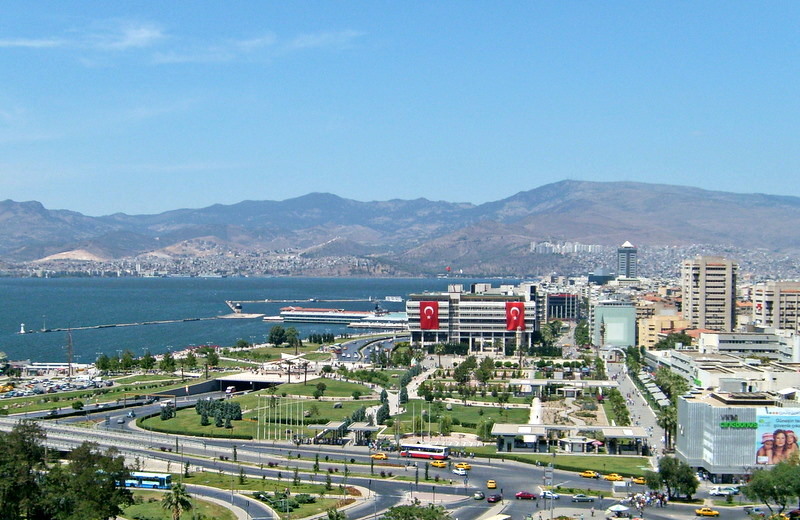SO you have already been to İzmir and you think you have already exhausted the list of places to visit: Fish at the sea-front, the Clock Tower and, of course, Ephesus. Do go back as there is more:
The symbol of İzmir is no doubt its clock-tower – the 115-year-old symbol of the cosmopolitan, the multi-cultural, multi-faith and polyglot nature of the city.
Initiated by the city’s Nicosia-born mayor Kamil Pasha, financed by the Muslim and non-Muslim bourgeoisie, built by French architect Raymond Charles Pere; it is a mixture of neo-classicism and Ottoman architecture.
Equally famous is the Asansör, or the Elevator, built in 1907, to tie the residential Karataş area to the waterfront. Asansör is located on the Dario Moreno Street, named after the famous Franco-İzmirian singer. No wonder the music in the elevator is his songs.
Sweet tastes: Those with a sweet tooth often have their afternoon tea in one of the two classical patisseries of İzmir: Reyhan and Sevinç. Run by families from the Black Sea who have migrated to the Aegean, the two establishments host a very loyal local clientele as well as visiting celebrities.
But there are new places, too: the French-style Leone, a patisserie run by three sisters who try to carry out what they learned to bake from their French mother, and the New York style-café B’ready, opened by a young couple who settled in İzmir a year ago. If you want a local taste, go to Dostlar Fırın to grab “boyoz” – a puff pastry that is one of the major gifts of the Sephardic Jews, who came to Turkey more than 500 years ago, to the street food culture of Turkey today.
Culture: Art aficionados will not miss the Arkas Art Center, located in the sea-facing section of the French Consulate building that was built 130 years ago and survived to this day. Arkas boasts of great classical exhibitions, including the present Victor Vasarely Retrospective. But it is worth crossing the street to take a look at what is being displayed in the French Cultural Center just opposite – it is sure to be avant-garde and unexpected.
Don’t miss Sardis: The lesser-known Sardes, or Sardis, the former capital city of the antique Kingdom of Lydia is where silver and gold coins were minted for the first time. Do not miss out on the Synagogue of Sardis, which was discovered in 1962. The archaeological excavations by the Harvard and Cornell universities have uncovered mosaics on the floors, marbling of the walls, various pieces of ritual furnishings and especially the over eighty inscriptions including six fragments in Hebrew and the rest in Greek that have been found in the interior.
Ancient Smyrna: The excavation area allows visitors to journey from Neolithic times to the relatively recent Classical past, stopping in ancient Smyrna on the way. Academic Akın Ersoy has taken part in the decades-long excavations at the agora in the middle of modern day İzmir since 2007.
Smryna, which gets its name from the amazons, is today a “complete” ancient city with a port at the Kemeraltı Bazaar and its agora, stadium and the acropolis in Kadifekale, she quoted Ersoy as saying.
Scientists found epigraphs on remnants of ancient earthquakes, water channels and graffito in Greek alphabet. A 30-meter wide and 160-meter long basilica here was the center of trade activities and banking, Ersoy said.
Hürriyet’s travel writer Saffet Emre Tonguç says murals on this basilica give important clues about the early-era Christian world. The agora was built in the 4th century B.C., but was re-erected after a big earthquake in 178 (A.C.).
“It is impressive here,” Tonguç said. “The voices of the guests in the ancient location mix with the sound of a Roma fountain, which has been active for the past 2,000 years.”
Hurriyet Daily News
